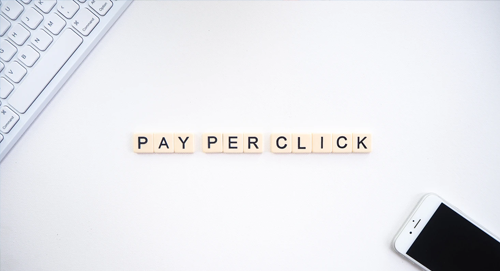Running paid ads for a SaaS isn’t clearcut – in fact there is no cheat sheet out there which you can download and study on your lunch break. The truth is, you can only really learn by networking with dozens of other paid marketers at top SaaS companies.
Below I have compiled 7 tips to scale your paid ads right now, learned over several years of networking, and spending millions of $ in ad spend – enjoy!
Tip 1: Ensure Your LTV matches the channel you’re investing $$$ in
The sooner you realise your LTV/ACV plays a major role in your growth strategy, the better.
There are only 5 main ways to build a billion dollar SaaS unicorn:
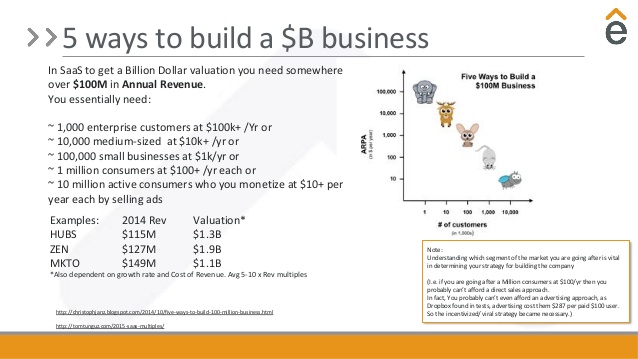
So, the short-story is you need to match your LTV/ACV with your go-to-market strategy and growth tactics. Are you going after mice or deers?
For example, if your LTV is less than $5k, chances are you will never be able to make LinkedIn ads work from a performance stand point.
Here’s a cheat sheet I have compiled for LTV vs. a handful of marketing tactics:
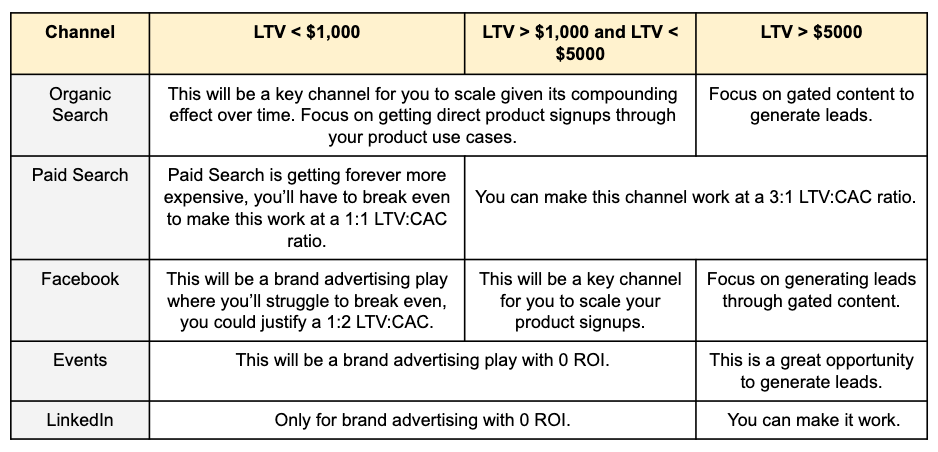
So make sure the paid channels you’re investing in match your LTV and goal (brand vs. performance). Don’t waste time testing or thinking about a channel if it won’t work for your LTV.
Tip 2. Invest enough in always-on brand ads.
The top companies invest at least 25% of their marketing budget in brand marketing. They harvest this demand they create through strategic paid search ads reutilising the same language used in their brand advertising.
Watch this 6-second YouTube bumper ad from Squarespace:
Notice how they include the keywords they want people to search for in Google at the end? “domains, websites, online stores, email marketing”
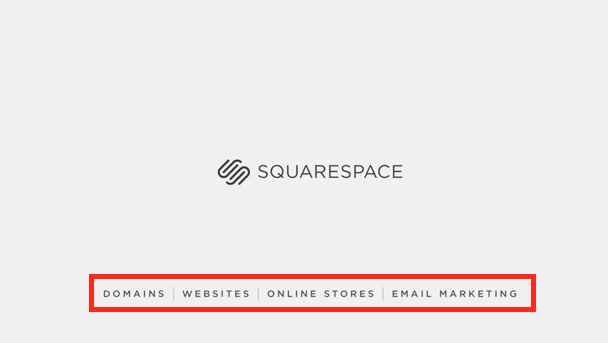
They don’t just do this on their YouTube ads, they also do it on their Display ads:

So when you search for “online store”, look at how they harvest the demand they made through their 6-second bumper & display ads:
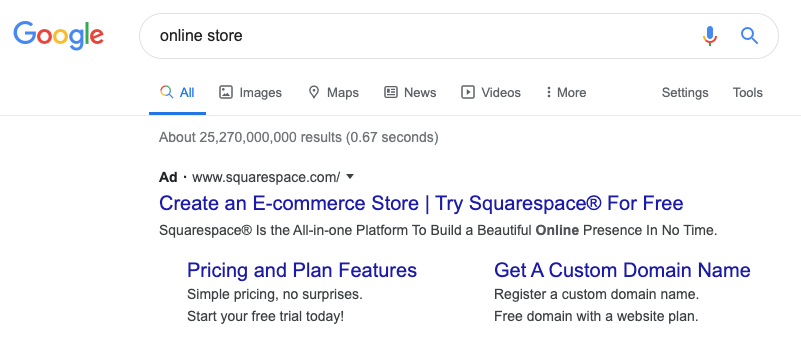
And here’s an example for when you search for “domain”:
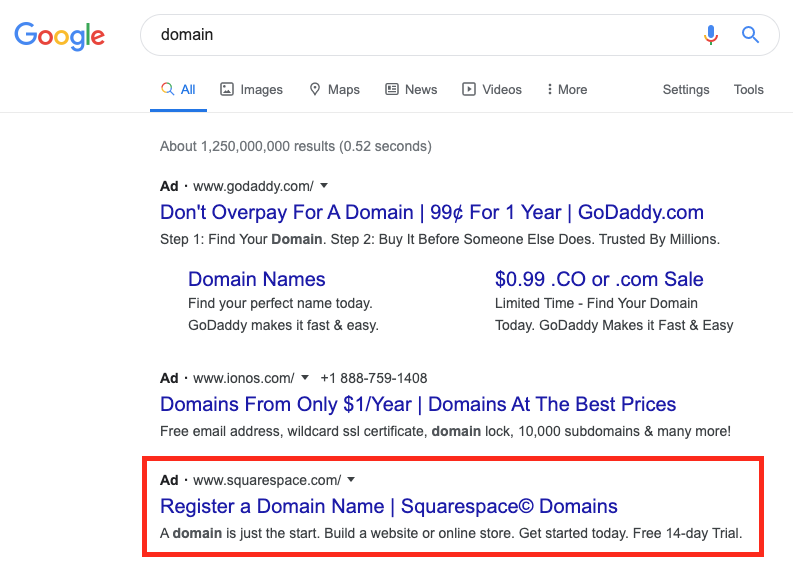
Below is the always-on machine between performance marketing and brand marketing you need to be building (credit here):

Finance team/CFO not convinced to run brand ads? This is super common. Here are three things you can do to sway their opinion:
- Speak to 5-7 companies in your industry and present a benchmark report of brand vs. performance spend.
- Run a brand-lift campaign on YouTube or Facebook (costs around $20k) and show the uplift % you are having by running your brand ads. Get solid data to back up why you want to run always-on brand campaigns.
- Run brand campaigns in a single city, measure the uplift in demand through search (you’ll need a big budget to see the impact)
Looking for SaaS paid ads help? Shoot me an email: jake[at]inflectiongrowth[dot]com
Tip 3. Use the correct conversion metric.
Signups & leads = vanity. The best conversion metric allows you to predict your north star metric and occurs within 7 days of the ad click.
E.g. north star = new MRR, conversion metric = product qualified lead.
Below is an example of Typeform. Instead of focusing on driving signups, they focus on driving activations (people who sign up and preview their typeform within 7 days).
They know that by focusing on this metric they will predictably drive new customer acquisition at a 10% conversion rate with a max 12-month conversion window (see calculating ROI in Tip 4).
It’s important to understand your lagging metric/north star (occurs in the future)… and work backwards to understand your leading metric that you can optimise and push in the present.
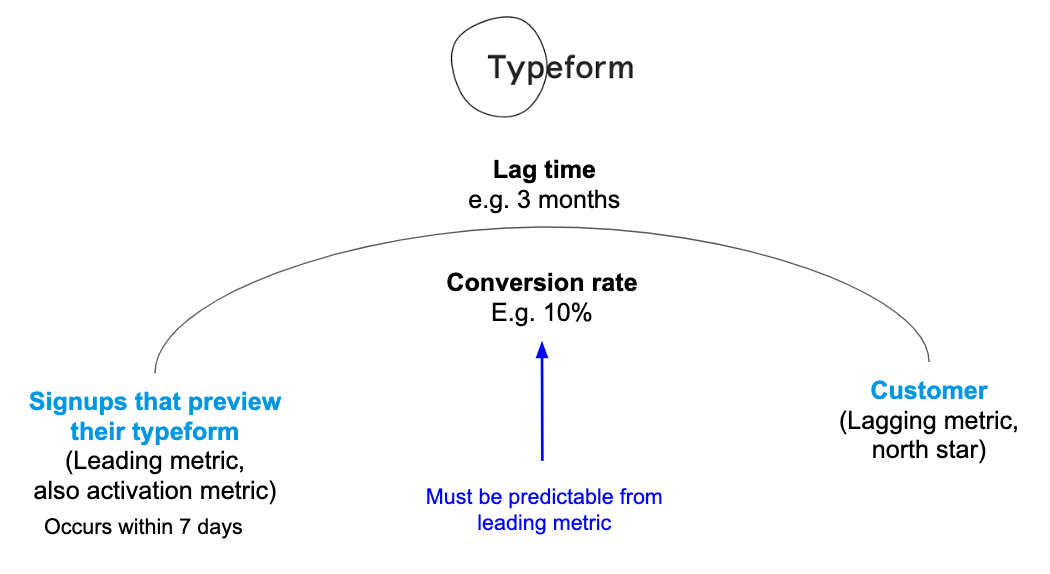
Now, the fastest growing SaaS companies feed this metric back into their ad networks and optimise around this conversion using machine learning. Use lookalike audiences of your best customers (high LTV):
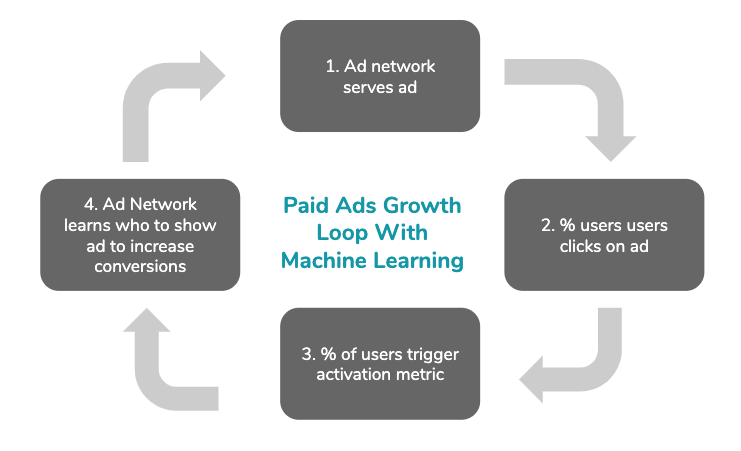
What’s your leading indicator of your north star that occurs within 7-days of your ad click? Get this right to build a successful paid ads growth loop.
Tip 4. Measure ROI correctly
Stop dividing ad spend in given month by # customers who were created in same month!! So many people do this, and your finance team are probably asking you to work our ROI this way.
You need to start measuring ROI using cohorts. This is between between making an investment in ad clicks and generating revenue, there is a lag. Make this agreement with your finance team as soon as possible so you’re both on the same page.
How do you implement this type of ROI measurement?
First, you’ll need to understand how a cohort of signups, converts into customers over time (or whatever your leading and lagging metrics are).
Study the following:

Analysis:
- Here we are looking at how 950 signups (costing $40 each) convert into customers over a 12-month period
- We can observe that we generate a total of 60 customers from this cohort, within 12 months
- The month-1 conversion rate is 3.68%, and cost per customer is $1086 (fake cost per customer)
- The 12-moth conversion rate is 6.32%, and cost per customer is $633 (real cost per customer)
- As a result, 58% of the customers will occur in month 1
ROI & Prediction Calculation:
- The 1-month multiplier is 1.7x.
- Calculation = 60 (total customers at month 12) / 35 (customers at month 1)
- Therefore, to predict total customer at month 12, we 1.7x month-1 customers.
- E.g. next month we spend $50,000 and generate 53 customers in the same month. We 1.7x this number = 90 to get to our 12-month customer #. So the cost per customer is $50,000 / 90 = $556
You’ll need to gather data from 12+ months ago and build a similar table. If you don’t have 12+ months of data from paid ads, then choose another channel which converts at a similar rate and use this as a benchmark data.
By all means, every month you’ll need to to follow how each prediction becomes true, and calibrate your model where possible, by building a graph like the following showing predicted vs. actual # customers:
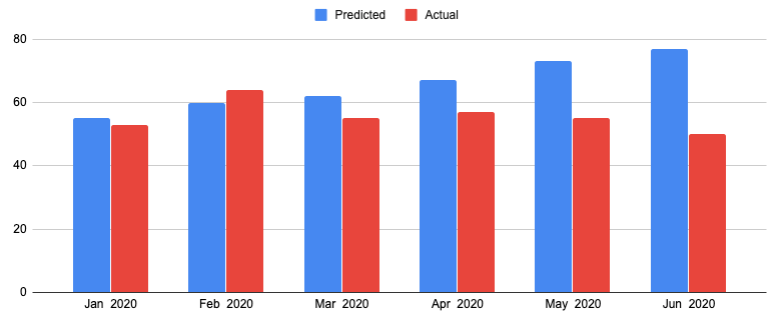
The most recent month’s actual will be much different to the predicted, but the further you go back, the more the actual and predicted should match.
Tip 5. Have the tech stack to measure or convert your paid traffic.
A lot of companies simply don’t invest the $ in solid attribution software and marketing automation platform.
In terms of attribution, you need to be able to measure both the first and last click as the bare minimum. For example, in the context of scaling Paid Search, a lot of marketers make the mistake of turning off “research keywords” which are part of the customer journey, and as a result their channel tanks because they cannot clearly see this through the attribution they are using.
Moreover, the danger of using just “last click”, is you’re giving too much weight to branded search – and not enough weight to where users originally heard about you from.
In many B2B SaaS, you’ll need a marketing automation platform in place to nurture low-intent leads (e.g. from webinars or eBooks), into product signups that your SDR team can follow up with.
Invest early in enterprise-ready software that will grow with you as you scale into a SaaS unicorn (avoid new shiny tools that cannot scale with you).
Recommendations:
- Marketing Automation: Hubspot or Marketo
- Attribution software: Bizible
Example Bizible attribution model:
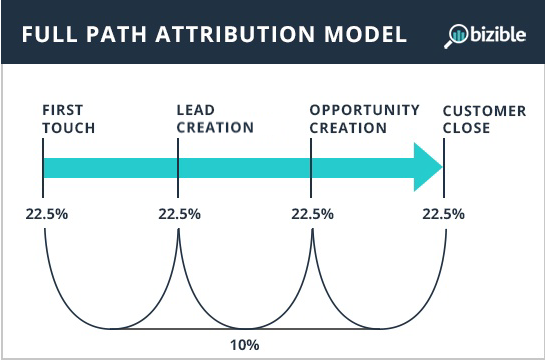
Moreover, you need to build a self-attribution muscle to measure push channels (e.g. paid social, podcast ads, newsletter sponsorships, etc)
How can you do this?
By simply adding a question on your demo request form: “How did you hear about us?”. Check out how Oliva do it below:
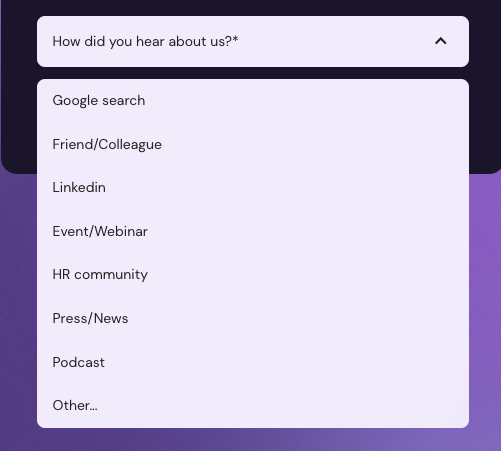
You can also add it post-signup if you’re running a PLG motion. Check out how Full Story is doing it:
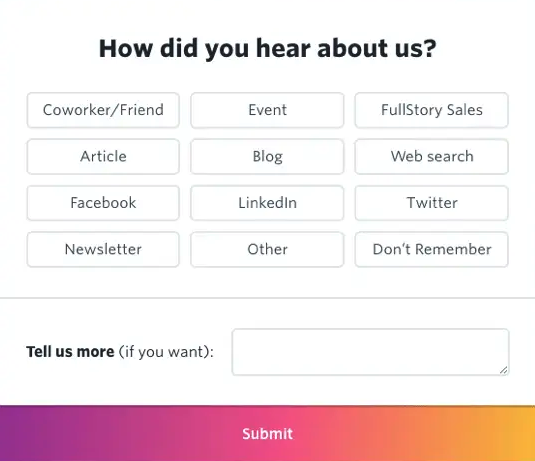
Now when you’re measuring paid ads investment efficacy, use two views to understand it:
- Software attribution (GA4, Hubspot, etc)
- Self-attribution survey
The former is likely attributing success to demand capture channels, and the latter to demand creation channels.
For example, if you’re seeing 4x the conversions from LinkedIn ads in your self-attribution survey – go with that data view instead of what your software attribution tech is telling you.
Tip 6. Don’t focus on too many channels; you don’t have the resources to support them all.
Choose your one or two channels and go deep on exploiting them. Go narrow before you go wide (this is called intensive growth, as opposed to extensive growth).
E.g. at Typeform we scaled Paid Search from €0 -> €300k / month and weren’t investing in any other paid channels.
You don’t have the resources (design, copy, data, analytics, etc.) or head space to focus on multiple channels at once.
Have a swipe through this SlideShare I made when explaining this to my paid marketing team at Typeform. It’s one one of my favourite analogies to explain this concept of intensive growth:
Tip 7. Build funnels
If your lead magnet is an eBook, don’t simply say “thanks for downloading our eBook” and end the funnel there. Instead, push people further down by offering them a demo, sign up, etc. Why show the prospect a dead-end when you can keep them “driving”?
Here’s an example of a webinar funnel I designed for TravelPerk:
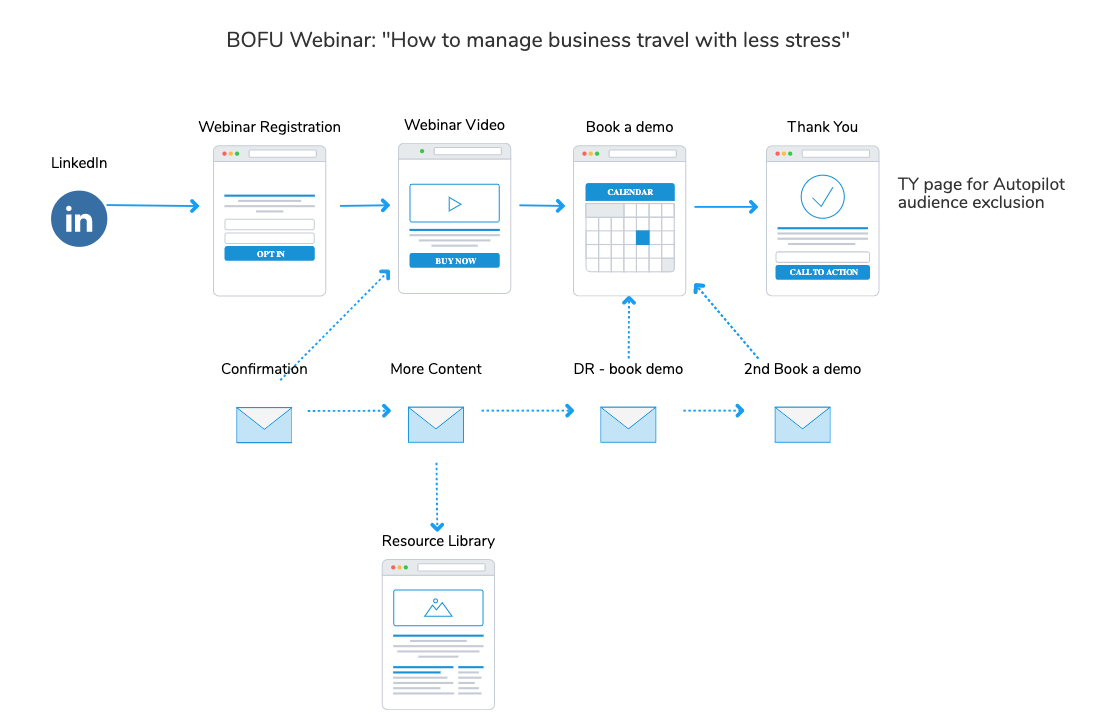
Things to note:
- The name of the webinar pre-qualified the audience – so you get relevant people clicking
- The webinar recording isn’t sent via email – instead the lead gets redirected to a page instantly where they can watch it = instant gratification & value
- At the point of value (viewing webinar), there is a prompt to “book a demo”. This is one of the best times to incite action
- The lead gets sent more value through email, by suggesting top resources at the resource library = reciprocity persuasion principle (Read Cialdini’s book on the psychology of persuasion)
- There is a drip email sequence where the lead gets prompt to book a demo (the primary campaign KPI)
How to take the funnel further? On the demo request thank you page, ask the lead to sign up and start exploring the product to generate PQLs for your sales team to follow up with.
—
Looking for SaaS paid ads help? Shoot me an email: jake[at]inflectiongrowth[dot]com
So there you have it, 7 tips to scale your SaaS paid acquisition in 2023. Did any resonate with you?

